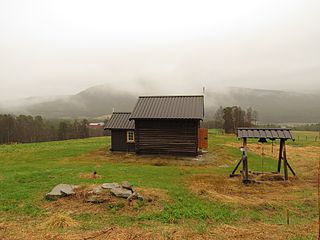
Demographic features of the population of Norway, including Jan Mayen, and Svalbard, where the hospital is not equipped for births, include population density, ethnicity, education level, health of the populace, economic status, religious affiliations and other aspects.
Norwegian Vietnamese or Vietnamese Norwegian refers to citizens or naturalized residents of Norway of partially and full Vietnamese descent.
Pakistani Norwegians are Norwegians of Pakistani descent, 65.23% of Pakistanis in Norway live in the capital Oslo. First-generation Pakistani Norwegians, who migrate from Pakistan, are distinguished from the mainstream in several demographic aspects, while second-generation Pakistani Norwegians, who are born in Norway, are well established in Norway and have gone on to become professionals and politicians.
Family reunification is a recognized reason for immigration in many countries because of the presence of one or more family members in a certain country, therefore, enables the rest of the divided family or only specific members of the family to emigrate to that country as well.
Iraqis in Norway make up approximately 33,924 people. They are mostly refugees from the Iran–Iraq War, the Saddam regime and in particular the Iraq War. Iraqis are the seventh-largest immigrant group in Norway after Poles, Lithuanians, Swedes, Syrians, Pakistanis and Somalis.
Immigration and crime refers to the relationship between criminal activity and the phenomenon of immigration. The academic literature and official statistics provide mixed findings for the relationship between immigration and crime. Research in the United States tends to suggest that immigration either has no impact on the crime rate or even that immigrants are less prone to crime. A meta-analysis of 51 studies from 1994–2014 on the relationship between immigration and crime in the United States found that, overall, the immigration-crime association is negative, but the relationship is very weak and there is significant variation in findings across studies. This is in line with a 2009 review of high-quality studies conducted in the United States that also found a negative relationship.

Turks in Norway or Norwegian Turks refers to ethnic Turks living in Norway. The majority of Norwegian Turks descend from the Republic of Turkey; however there has also been Turkish migration from other post-Ottoman countries including ethnic Turkish communities which have come to Norway from the Balkans, the island of Cyprus, and more recently Iraq and Syria.
In 2017, Norway's immigrant population consisted of 883,751 people, making up 16.8% of the country's total population. Of this number, 724,987 are foreign-born, while 158,764 are Norwegian-born with foreign-born parents. The ten most common countries of origin of immigrants residing in Norway are Poland (97,197), Lithuania (37,638), Sweden (36,315), Somalia (28,696), Germany (24,601), Iraq (22,493), Syria (20,823), Philippines (20,537), Pakistan (19,973) and Eritrea (19,957). The immigrant population comprises people from a total of 221 countries and autonomous regions, but 25% of the immigrants are from one of four migrant groups: Polish, Lithuanians, Swedes and Somalis.
African immigration to Norway refers to immigrants to Norway from Africa. An estimated 150,000 people in Norway are either first or second generation immigrants from Africa. Most of these have a background as asylum seekers.

Crime in Norway is countered by Norway's law enforcement agencies.

Grim is a borough in the city of Kristiansand which lies in the municipality of Kristiansand in Agder county, Norway. The borough has a population of about 16,000 people and is the second least populated borough in Kristiansand. Grim is located in the northwestern part of the municipality, north of Vågsbygd borough, northwest of Kvadraturen borough, and west of Lund borough. Grim also borders Songdalen and Vennesla municipalities to the west and north, respectively.
Syrians in Norway are citizens and residents of Norway who are of Syrian descent. Most have arrived as asylum immigrants because of the Syrian civil war.
Syrians in Denmark are citizens and residents of Denmark who are of Syrian descent.
There is a fast-growing Oriental Church in Bergen, Norway, named Saint Michael's Orthodox Church, with 147 members in 2010. It is almost exclusively made up of Ethiopians and Eritreans. The number of Eritreans in Norway grew from 813 in 2000 to 7,728 in 2010, while the number of Ethiopians grew from 2,803 to 5,805.
Eritreans in Norway are citizens and residents of Norway who are of Eritrean descent. Most have a background as asylum seekers that have fled Isaias Afwerkis regime.
Somalis in Norway are citizens and residents of Norway who are of Somali descent. They are the biggest African migration group in Norway. 36.5% of Somalis in Norway live in the capital Oslo. Almost all Somali in Norway have come to Norway as refugees from the Somali Civil War. In 2016, Somalis were the largest non-European migrant group in Norway.
Ethiopians in Norway are citizens and residents of Norway who are of Ethiopian descent.
Moroccans in Norway are citizens and residents of Norway who are of Moroccan descent.

Russians in Norway are people born in Russia or whose parents were both born in Russia and who live in Norway.







